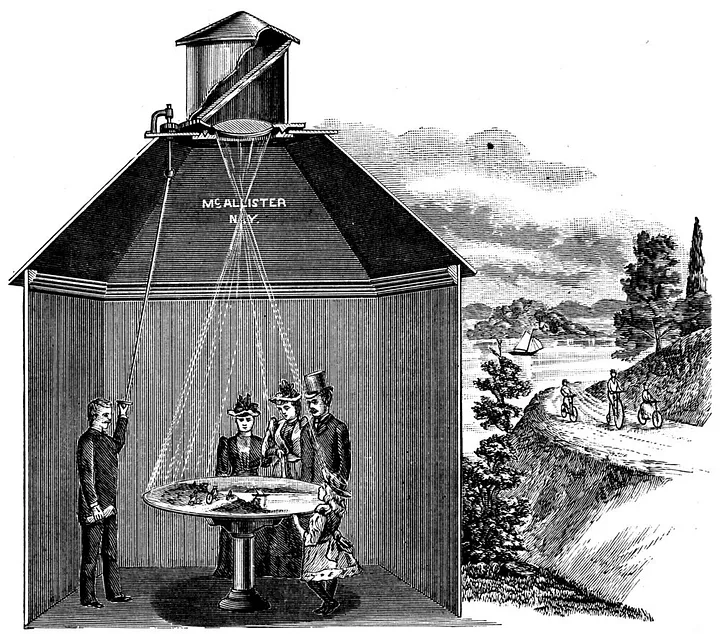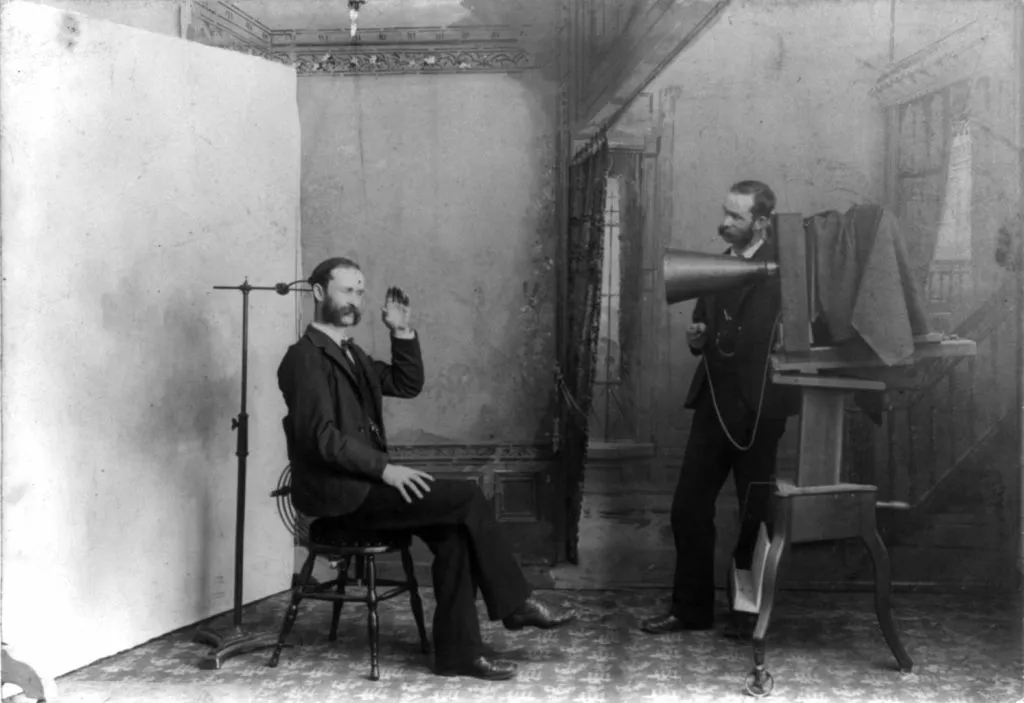Intro: how pinhole photography works

In 1839 the invention of 2 distinct photograph processes were announced in France and England:
- the daguerrotype by Luis Jacques Daguerre
- the negative / positive process by Henry Fox Talbot
Daguerre’s one produced one of a kind highly detailed image on a silver coated copper plate while Talbot’s one was a paper based negative/positive process that could produce multiple prints from a single negative.
Both are based on the fundamental principles of chemistry and physics: the reaction of particular chemical compounds to light and the creation of an image when light passes through an aperture in a dark room or box.
The light sensitivity of certain chemicals had been experimented with as early as 1727 by the German natural philosopher Johan Heinrich Schulze. Experimentation with optical principles can be dated back to the 4th century BC and the writing of Aristotles. Long before the invention of photography artists utilized the “camera obscura”, a Latin phrase meaning dark room, as a drafting aid.
Light entering a dark box or room through a small hole is reflected on the opposite side as an upside down, backward image of the scene outside. Its orientation is corrected with a mirror.
An engraving from an article in Denis Diderot’s l’Encyclopédie (ca. 1751) identifies a variety of camera obscuras and illustrates their functions.
Camera obscura, Daguerrotype and Talbot’s techniques involved the hand of a man, and inevitably some drafting skills were required. The invention of photography would ultimately unite chemistry and optics, permitting the right itself to draw the image ad creating a new artistic medium.

References:
F. GUIDOTT — France, active 1700s Dessein, chambre obscure, ca. 1751 Bibliography: A history of Photography
Follow us for more content on Instagram .